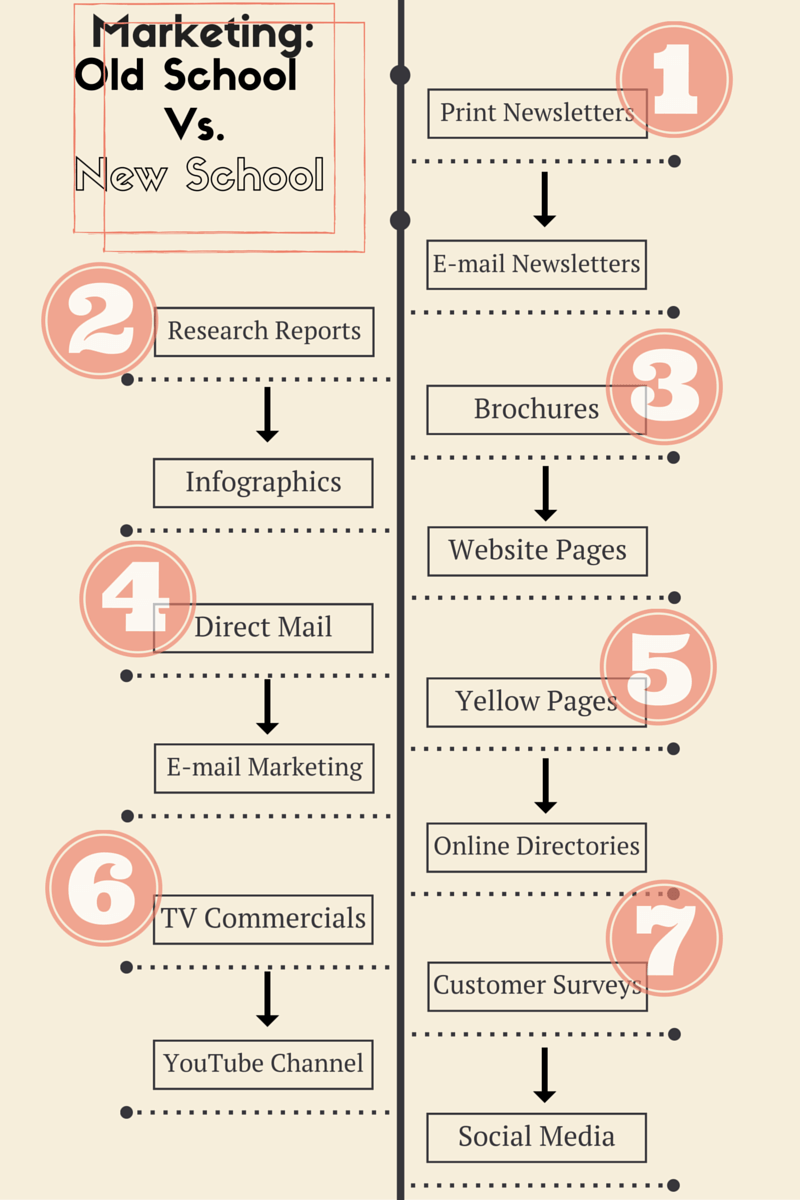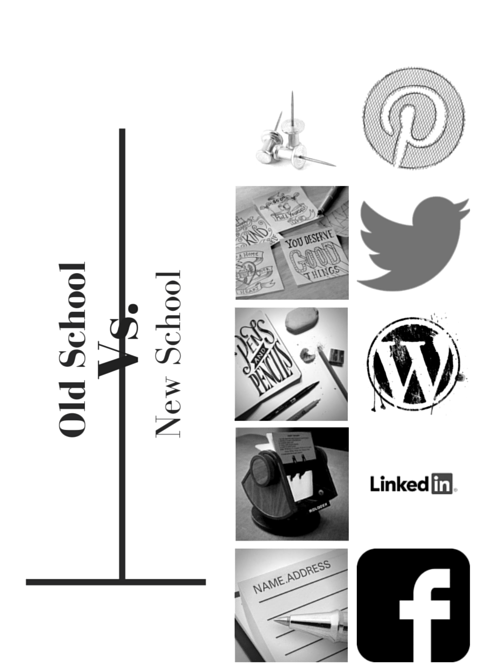In many ways, marketing is as old as civilization itself. Since before the times of ancient Greece, culture has based its trading and selling upon the ability to move products faster than the man next to him. As a result, marketing was born–a concept birthed from the need to set an individual or group apart from the crowd. In many ways, marketing seems akin to Darwin’s “survival of the fittest.” The recent marketing evolution is a small part of this bigger picture and it is about survival.
To help you up your marketing game, we’ve put together 3 visual representations of the marketing evolution of recent years. Most of us don’t want our businesses to merely survive–we want to thrive. Transistioning to the new era of marketing is the only way to maintain (or gain) a position as a frontrunner or at the very least, stay in your client’s view.
Marketing Evolution: Old Tools ⇒ New Tools
Instead of abandoning traditional marketing tools, use what you already know to springboard into the “new school” of online marketing. Many tactics of old translate beautifully when they are modified into a current format.
Print Newsletters ⇒ E-mail Newsletters
Print newsletters take TONS of time to put together, so don’t just chunk ’em! Get the biggest bang for your buck and put them in a digital format.
Tips:
- Amp up the educational elements of your newsletter and play down the promotional parts.
- Add a few email-specific items such as links.
- Incorporate a call-to-action.
Brochures ⇒ Website Pages
Ever written a brochure about who and what your company is? Voila! You now have content for site pages on your webpage (like “about us” pages and “services”). These will help potential customers learn more about your company and get familiar with what you do.
Customer Surveys ⇒ Social Media
Social Media has drastically changed the entire scope of marketing, and surveys are no exception. Instead of asking customers to fill out a survey, spend more time on social media sites. Doing so allows you to keep tabs on what’s already being saying about you.
Social media is powerful: with 90% of young Americans plugged into social outlets, the social media landslide doesn’t stop there. The Pew Research Center recently published a new social media survey that found 65 percent of American adults are frequent social media users (and feins) as well. With numbers like those, it should be no problem getting many of them to weigh in while they’re already using their favorite online hangouts.
Keeping on top of your company’s social media buzz is a great way to direct the conversation. Have a question about what people want to see in a new service you’re offering? Tweet about it! Want to know what people think about a trending topic? Ask them on Facebook. The possibilities for relational marketing–and your business’ growth–are endless. Just take a look at all the traditional marketing tools social media has been able to replace!
Marketing Evolution: Paper ⇒ PC
Marketing Evolution: P’s ⇒ C’s
With so many dramatic changes upon us, it’s time we shift our focus. In old school marketing, the 4 P’s laid out the golden rules of advertising: product, placement, price, and promotion. The first priority, of course, was to find as many potential customers as possible, convert them and, in turn, establish a few basal relationships to earn loyalty. New school marketing, however, demands an immediate shift in our focus: cultivate a loyal customer base and keep them engaged with continued communication. Say goodbye to the 4 P’s and make room for the 6 C’s: contact, connection, conversation, consideration, consumption, and community.
The epic shift from company to consumer has turned traditional marketing tactics completely upside down: relational marketing is in full swing! It’s no longer enough to just make consumers aware of your services; you must form a connection through meaningful contact that establishes true dialog. New school marketers can then build an entire community around converted customers who have “consumed” the products their business has to offer.
As markets expand and new platforms emerge, marketing practices are transforming by the minute. To stay relevant, you must stay current. Realize the importance of creating consumer bonds. Like Kotler said, “The cost of attracting a new customer is estimated to be five times the cost of keeping a current customer happy.” More than branding, what this new school form of marketing teaches us is that we are building: building our companies, building loyal customers, and most importantly, building new models of growth. The ideas are evolving simply because our customers–and their preferred media–already has.











